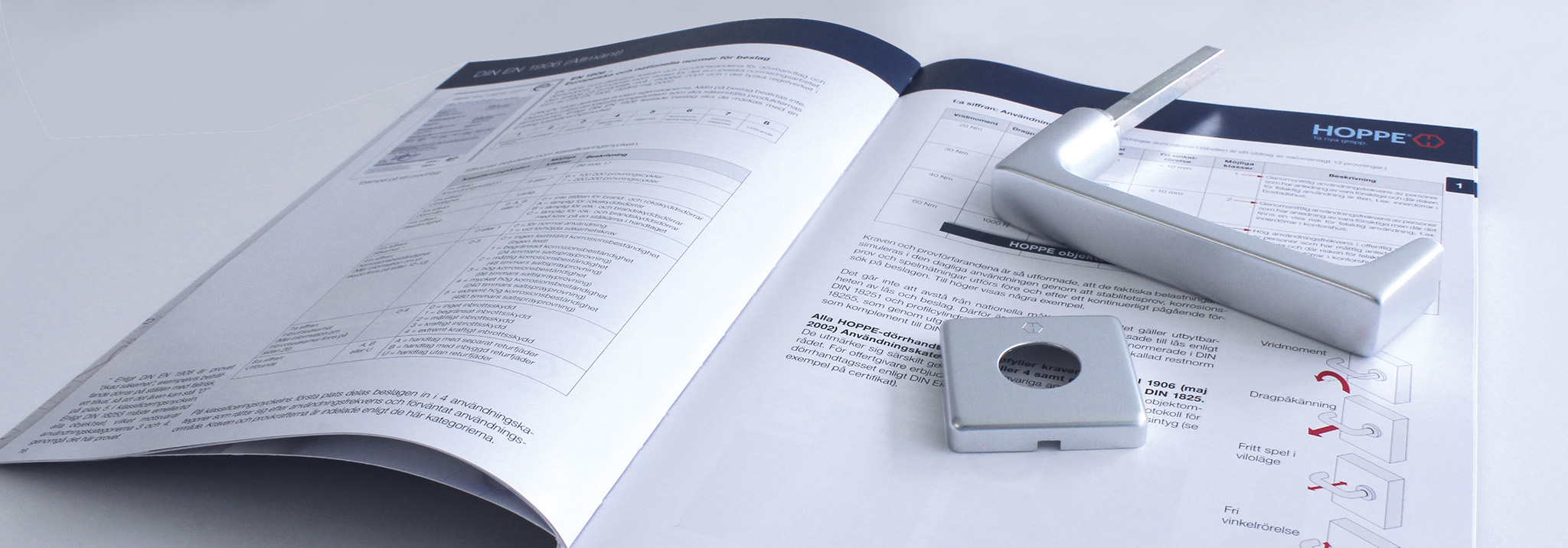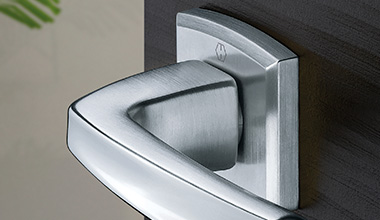Door Hardware Glossary

Active Door Set
Handle set used on the active panel. This set will always have two cylinder holes in the backplates to accept a full cylinder.
Active Hardware
Hardware used solely for the active panel. Includes latch and deadbolt and is handle activated.
Active Panel
When a door is referred to as “active” it means it is the primary functioning door usually in a pair of French doors. This will be the door that opens first.
Astragal
Decorative center section of wood or other material that is attached to the inactive panel and serves as a jamb.
Backplate
Decorative plate which mounts to the face of the door with holes to accept the handle and cylinder.
Backplate Screw
Screws that attach one backplate to the other. The screws enter through screw holes on the interior plate, travel through the door and attach directly to the exterior plate. Available in a variety of lengths to accommodate different door thicknesses.
Backset
Distance from the surface of the lock faceplate to the center of the handle hole. This distance establishes where the handle will be mounted to the face of the door. The HLS multipoint system uses a 35mm (1 3/8″) or a standard 45mm (1 3/4″) backset as well as 60mm (2.36) and 70mm (2.76) backset.
Cylinder
The unit that mounts lengthwise through the door thickness and backplate. The thumb turn knob and key activate a cam which locks the deadbolt.
Cylinder Screw
Screw used to tighten cylinder into place. The screw enters through the faceplate and drive rail on the edge of the door and tightens into a threaded hole in the side of the cylinder.
Deadbolt
Square shaped bolt used on all gears to secure the door at the mid-point. Located directly below the latch, it comes in two different lengths; 14mm (0.55″) and 25mm (1.00″).
Drive Rail
The vertical moving mechanism of multipoint hardware under the faceplate. The drive rail carries the motion from the gear to the multipoints to activate them. This can be achieved through a single part or through multiple parts hooked together such as extensions and corner drives. The drive rail is hidden by the faceplate.
Fixed Dummy
Handle set is usually “fixed” in place. Handles serve only as pull handles and do not operate. Usually used on inactive panels where a mortise flush bolt has been used. These sets have no cylinder holes in either backplate.
Engage
A term used to describe the activating of the multipoint hardware. When the multipoints have been activated into position, the system is said to be engaged.
Eurogroove
Routed groove in the edge of the door, usually centered, but may be offset to one side in which the drive rail and faceplate of the multipoint hardware are mounted.
Extension
Sections of operating drive rail that can be attached to the gear to reach the needed height of a door.
Faceplate
Flat piece of metal that covers the drive rail and multipoints along the entire length of the door sitting flush with the edge.
Frame
The outer casing of a door which mounts directly into the rough opening of a wall.
Gear
Main functioning body of multipoint hardware containing hub for handle operation and deadbolt (on active gear).
Handle Set
Kit which includes handles, backplates and screws and may also include a cylinder.
Inactive Door Set
Handle set used on the inactive panel. This set will have a cylinder hole on the inside plate only to accept a half cylinder. You may also use an active set on an inactive panel.
Inactive Hardware
Hardware used on the inactive panel, no latch or deadbolt.
Inactive Panel
When a door is referred to as “inactive” it means it is the secondary functioning door in a pair of French doors. This door can only be opened after the ?active? panel has been opened.
Jamb
See frame.
Latch
The catch for the door.
Lockcase
The main body of the multipoint gear.
Mishandling Device
Prevents locking points from accidentally firing and potentially damaging door trim.
Mortise
Edge pocket for lockcase or additional locking points.
Mortise Lock
Any hardware containing a gearbox that requires pocket routing in the edge of a door in order to be mounted or installed.
Multipoint Hardware
Any hardware that has multiple locking points which simultaneously lock into place through the action of a continuous travel drive rail activated by a handle.
Powder Coating
Type of finishing process in which parts are spray painted in a spray booth and then baked to cure the finish.
Profile
A UPVC or aluminum extrusion used in door manufacturing. The shape/style of each extrusion differs between each extruder and therefore requires different hardware–particularly hinges and strike plates.
PZ
Refers to the distance from the center of the handle hole to the center of the cylinder hole. HLS swing door standard is PZ 92mm.
Roller
Small cylindrical cam locking point that is connected to the drive rail and secures inside a strike plate by an upward and downward movement along the surface of the faceplate.
Roundbolt
Bullet shaped locking point that retracts flush inside the faceplate until engaged, at which point it deadbolts the door inside a strike plate. No upward or downward movement. This version requires additional mortising for the roundbolt lockcases.
Screw Support
A support on the backside of the gear for the screws which helps prevent flexing or bending of the gear once installed in the edge of the door.
Set Screw
Small screw located on the neck of the handle which is used to tighten handle into the spindle.
Shootbolt
Arrow shaped locking point that retracts into the eurogroove until engaged, at which point it extends out and locks into strike plates in the head and sill of the door.
Single Point
A mortise lock consisting of a latch and deadbolt only.
Spindle
One or two-piece metal shaft used to mount the handles to the door. The two-piece has a groove that accepts the set screw in the handle. Available in different lengths to accommodate a variety of door thicknesses.
Stile
Upright or vertical piece of the framework of a wood flush door.
Strike Plates
Plates that the locking points (roller, tongue, round bolt, deadbolt or latch) lock into. Different strike plates are required for different versions of locking points and profile designs.
Threshold
The horizontal bottom portion of the door frame, also called the sill.
Throw
Distance a deadbolt, tongue, roundbolt, etc. travel from beginning point to point of full extension.
Tongue
Triangular shaped locking point that retracts flush inside the faceplate until engaged, at which point it extends out to lock into a strike plate.
UG
This term is used to refer to “no cylinder hole” on a backplate.

